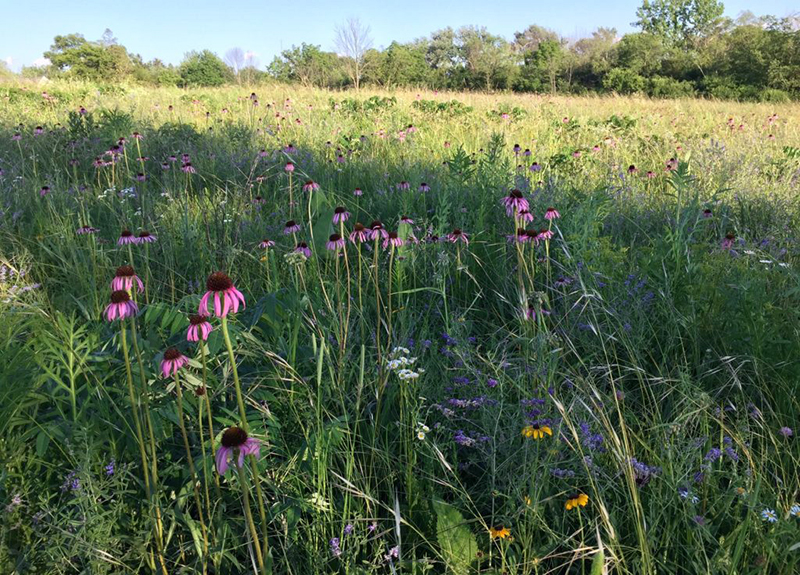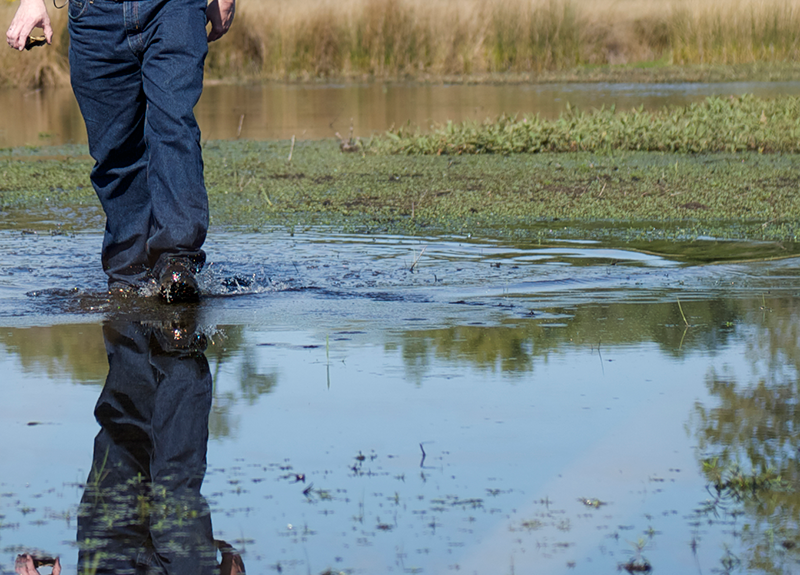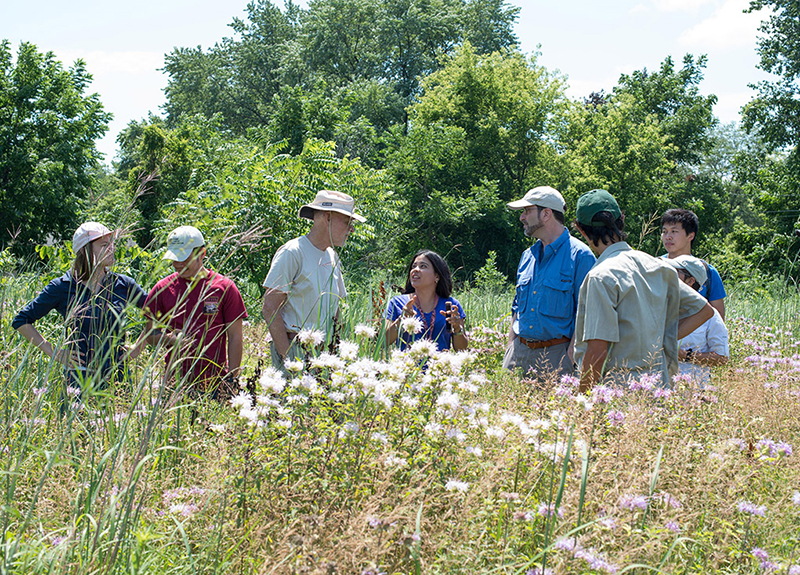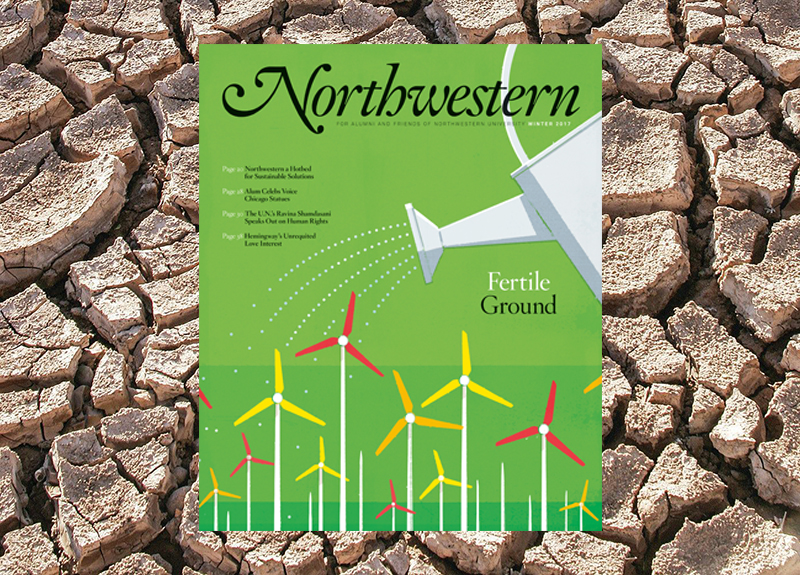Article originally published by The Nature Conservancy.
A graduate student at Northwestern University, Liliana Hernandez Gonzalez is the lead researcher for the storm water project at Indian Boundary Prairies. The Nature Conservancy (TNC) recently sat down with Liliana to learn more about the program, her role in the research, and what’s next in her career.
TNC: How did you become involved in this study and what’s your role?
Liliana Hernandez Gonzalez: During the summer of 2014, I participated as an undergraduate in the Summer Research Opportunity Program of Northwestern University (NU) doing research under the mentorship of Professor Aaron Packman. At the end of the Program, I had a conversation with Professor Packman about my interest in pursuing graduate studies, conducting research in the field and working directly with the community in order to apply my knowledge in engineering with environmental policy. Professor Packman talked to me about the opportunity of working on this project and I immediately accepted. Currently, I am the graduate student leading the project.
TNC: Can you describe what kind of work you’re doing?
Liliana Hernandez Gonzalez: This study aims to monitor urban green spaces, like Indian Boundary Prairies (IBP), as potential green infrastructure alternatives for storm water management around cities. The ongoing work at IBP includes the installation of Waggle nodes similar to those used in the Array of Things (AoT) project. The Waggle technology used in AoT was recently developed at Argonne National Laboratory (ANL) and it consists of an open and free source network of sensors boxes. The initial sensor packages were designed to measure air quality around Chicago’s Loop. However, we are adding sensors to measure water quality and to determine the hydrological response of the natural areas at IBP. Examples of sensors that we are adding to the AoT package are: soil moisture sensors, rain gauges, water level sensors and an infrared camera.
TNC: How does this project complement your graduate work at Northwestern?
Liliana Hernandez Gonzalez: It gives me the privilege to work and collaborate with experts in the field like hydrologists, environmental engineers and ecologists. I am looking forward to working with staff from The Nature Conservancy, Argonne National Laboratory and the Chicago Botanic Garden.
TNC: What made you want to work on an environmental project like this one? Is this your first time working in a green space like IBP?
Liliana Hernandez Gonzalez: My love for nature and my desire to make a positive impact in the society by providing solutions to current and emerging environmental challenges have motivated me to work on a project like this one.
Yes, this is my first time working in a green space like IBP. However, in 2015 I conducted research at the green roof of the Chicago Botanic Garden as part of the Science Undergraduate Laboratory Internship (SULI) of Argonne National Laboratory under the supervision of the environmental engineer and agronomist M. Cristina Negri.
TNC: What’s your favorite thing about working on this project?
Liliana Hernandez Gonzalez: My favorite thing about working on this project is the real impact that it can have in the community. We will see the effects of climate change by the end of this century. Therefore, the challenge today is to promote the use of nature-based solutions to ameliorate the impacts of climate variability caused by the effects of climate change, such as floods. This project has the potential to inform and improve flooding conditions in neighborhoods near IBP. I am also really excited to work in the field at one of the last well-preserved prairies in the Midwest.
TNC: After this study, what’s next?
Liliana Hernandez Gonzalez: After this study, I see myself in a research laboratory or a government agency working to develop green technologies for urban renewal, site remediation, and green infrastructure design. Later in my career, I would like to go back to Puerto Rico to be a professor in order to guide students through their education in environmental engineering and sustainability science.
TNC: Have you always been concerned about nature? Have you always known you wanted a career working in science/the environment?
Liliana Hernandez Gonzalez: Since my childhood, I have been in contact with nature because my grandparents live in a rural neighborhood in the central mountainous region of Puerto Rico. However, my interest in pursuing an environmental career started when I was 14 years old. By that time, I joined the Venturing Program of Boys Scouts of America. Through that program, I became involved in leadership and outdoors activities that motivated me to be proactive about conservation and restoration of our natural resources. For that reason, I decided to obtain my undergraduate degree in civil engineering at the University of Puerto Rico at Mayaguez with a long term goal of pursuing graduate studies in environmental engineering.






